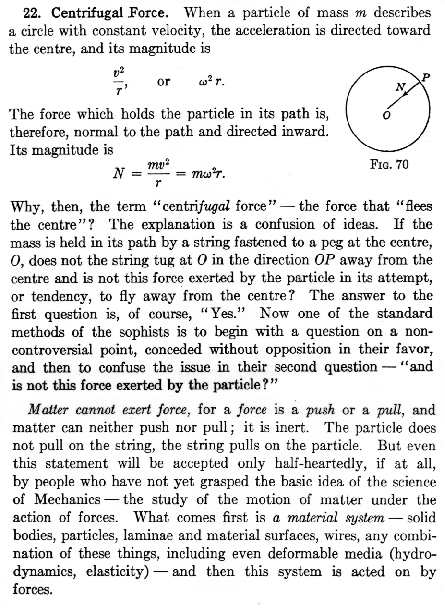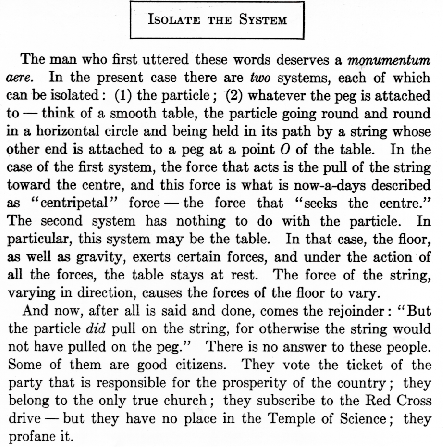The book "Mechanics" was finished
in 1937 when Osgood was already 73, just 6 years
before he passed away. As a very experienced teacher then
and a very old man, Osgood must have had a lot of ideas about
what questions the readers, mostly physics majors,
have concerning physics concepts and principles, so he
approached them with a unique pedagogic style at the
undergraduate level.
Goldstein mentions the first five chapters as being
an elementary introduction to the subject that is delightfully
flavored. He also specifically directed our attention to the part
reproduced opposite. Osgood, while
introducing the centrifugal force, mentioned the basic idea
of isolating the system while solving problems in mechanics.
Osgood raised the question that
some "sophists", as he called them, might want to
argue with. The Sophists of ancient Greece were philosophers who
had a reputation for reasoning that was clever (the modern word
sophisticated comes from this root) but could sometimes
be misleading also. Osgood makes clear his
attitude towards these people and the questions they might
raise.
Let us pay attention to the italics on page 102: monumentum aere
(bronze momument). This came from the then-famous poem Exegi Monumentum Aere Perennius, the
30th poem of Odes Book III, by the Roman poet Horace. (I have
included an english translation of the poem for your reference). Osgood
gave applause to the
person who "first uttered" the idea of isolating the system,
thereby answering one of the common confusions about centrifugal force.
Now, think of going back to the late years
of the last century - students can't even appreciate physics textbooks
without a sound foundation in poetry and classical languages!! It must
have been even harder for international students.


